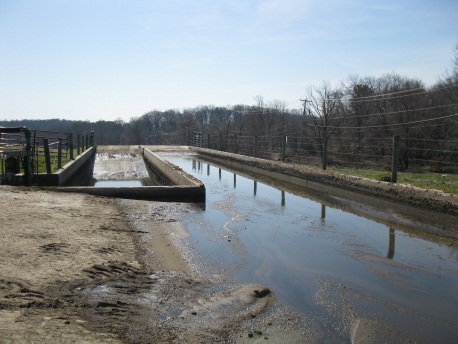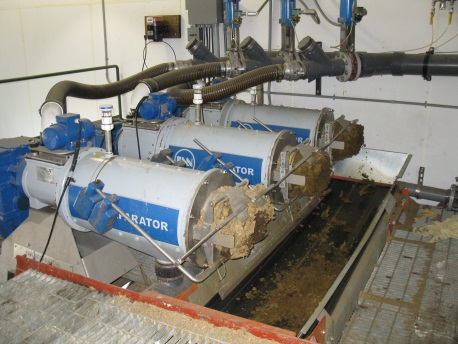![]() Waste to Worth home | More proceedings….
Waste to Worth home | More proceedings….
Is Solid-Liquid Manure Separation Worthwhile? |
| * Presentation slides are available at the bottom of the page. |
Solid-liquid separation of animal manures and other agricultural products can be an integral part of a livestock operation ranging from improved facility performance to enhanced nutrient management. A document entitled “Solid-Liquid Separation Alternatives for Manure Handling and Treatment” is being created through work by Clemson University and funding from USDA-Natural Resources Conservation Service. The purpose of this document is to assist in solid-liquid separation technology selection, evaluation of separation performance, and quantifying the impact of solid-liquid separation on manure management. This presentation will provide an outline of this document including methods of solid-liquid separation, influence of manure characteristics and handling methods, fundamentals of solid-liquid separation, performance of various solid-liquid separation technologies, separation enhancement methods, and design considerations. An overview of various farm scale separation technologies is also presented in the solid-liquid separation document.
What Did We Do?
 |
|
|
In this document we have provided a detailed compilation of empirical, theoretical, and practical information related to the performance and design of solid-liquid separation systems for animal manure treatment. The information is divided into the following chapters: Methods of Solid-Liquid Separation, Fundamentals of Solid-Liquid Separation, Measures of Solid-Liquid Separation Performance, High-Rate Solid-Liquid Separation, Unique Applications of Solid-Liquid Separation Technology, and Design Considerations. Within these chapters detailed information is provided on: the influence of entrainment on the performance of mechanical separators, design of gravity settling using discrete particle settling and hindered settling theory, efficacy of combining separator methods in a single machine, benefits of using coagulants and flocculants, benefits of solid-liquid separation, and a summary of the solid-liquid separation methods that have been used with sand-laden dairy manure. The publication also provides twenty-one detailed examples such as: design of settling basins based on hindered settling velocities, calculation of the performance of a variety separator options using field data, calculation of dimensions for sand lanes, determination of chemical need to enhance mechanical solid-liquid separation, and sizing of storages for separated solids. Numerous system design diagrams are also provided to demonstrate the wide variety of ways that solid-liquid separation can be implemented into an animal manure treatment system.
What Have We Learned?
 |
|
|
This work brings together fundamental information about solid-liquid separation, benefits and limitations of many separation technologies, performance measurement techniques along with design considerations into one document.
Future Plans
This document will be published as a USDA-NRCS technical note or as part of the National Engineering Handbook, Part 651 Agricultural Waste Management Field Handbook.
Authors
Jeffrey P. Porter, P.E. Environmental Engineer Manure Management Team USDA-Natural Resources Conservation Service; e-mail – Jeffrey.Porter@gnb.usda.gov
Dr. John P. Chastain, Professor and Extension Agricultural Engineer School of Agricultural, Forestry, and Environmental Sciences Clemson University; email – jchstn@clemson.edu
Additional Information
 |
|
|
John Perkins Chastain, PhD Homepage
East National Technology Support Center Directory
Solid Separation Technologies for Animal Manure Webinar
Acknowledgements
A special thank you goes out to the Piedmont-South Atlantic Coast Cooperative Ecosystems Studies Unit (CESU). This Cooperative and Joint Venture Agreement allowed for this work to take place.
Additional support was provided by the Confined Animal Manure Managers Program, Clemson Extension, Clemson University, Clemson, SC.
The authors are solely responsible for the content of these proceedings. The technical information does not necessarily reflect the official position of the sponsoring agencies or institutions represented by planning committee members, and inclusion and distribution herein does not constitute an endorsement of views expressed by the same. Printed materials included herein are not refereed publications. Citations should appear as follows. EXAMPLE: Authors. 2013. Title of presentation. Waste to Worth: Spreading Science and Solutions. Denver, CO. April 1-5, 2013. URL of this page. Accessed on: today’s date.

